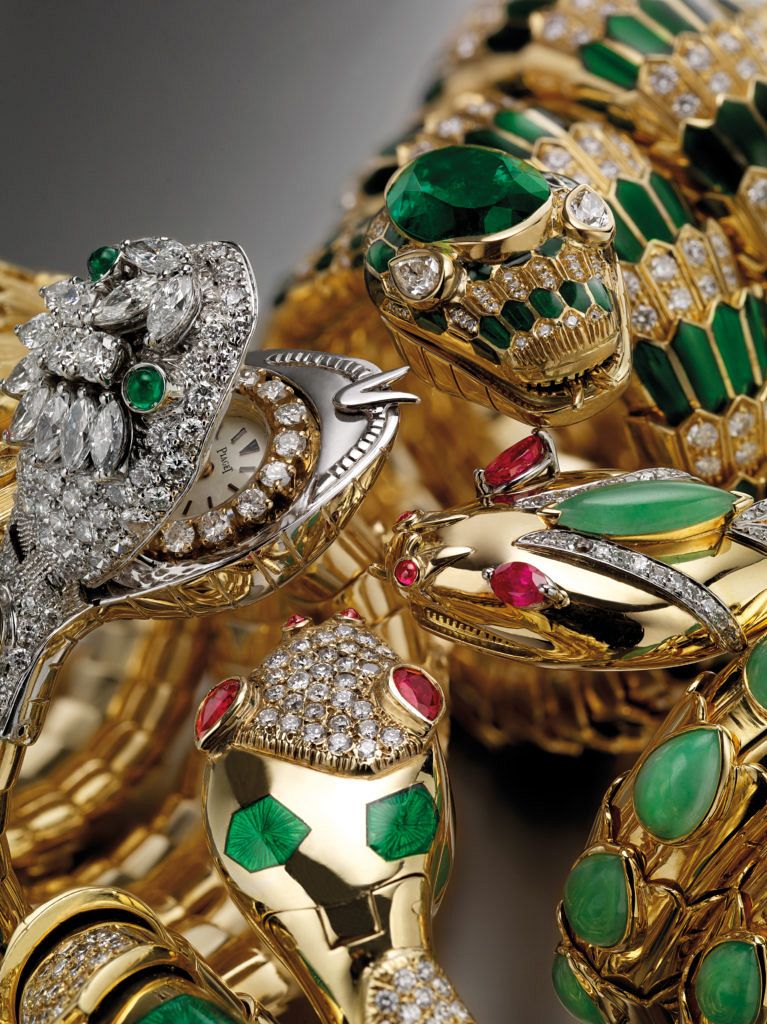 For most of us today, snakes evoke a mixture of fascination and fear – but since Ancient times they have been a mythological symbol for countless cultures and civilisations. Although, in the Christian tradition, a serpent represented the devil in the Garden of Eden, snakes mostly had positive associations. For Native Americans, Mayans and Aztecs, Persians, Chinese, Hindus, Africans and Australian First Nation tribes, they represented, variously, power, wisdom, eternity, fertility, sexual desire, protection, and a direct link to ancestral spirits. Unsurprisingly, then, since humans first adorned their bodies with jewellery, snakes have been a constant motif – the shape of their sinuous bodies being perfectly suited to wrapping around wrists or necks. The Egyptian Pharaohs and Queens (we’ll come back to Cleopatra later) wore serpentine bracelets and adorned their headdresses with a rearing cobra to signify their quasi-divine status. From there, the powerful symbolism of snakes spread to Greece, becoming associated with Asclepius, the God of medicine (a serpent coiled around a rod remains the emblem of physicians to this day), and thence to Rome, where they represented wisdom and everlasting love. In the 19th century, Queen Victoria’s engagement ring – which took the form of an emerald and…
For most of us today, snakes evoke a mixture of fascination and fear – but since Ancient times they have been a mythological symbol for countless cultures and civilisations. Although, in the Christian tradition, a serpent represented the devil in the Garden of Eden, snakes mostly had positive associations. For Native Americans, Mayans and Aztecs, Persians, Chinese, Hindus, Africans and Australian First Nation tribes, they represented, variously, power, wisdom, eternity, fertility, sexual desire, protection, and a direct link to ancestral spirits. Unsurprisingly, then, since humans first adorned their bodies with jewellery, snakes have been a constant motif – the shape of their sinuous bodies being perfectly suited to wrapping around wrists or necks. The Egyptian Pharaohs and Queens (we’ll come back to Cleopatra later) wore serpentine bracelets and adorned their headdresses with a rearing cobra to signify their quasi-divine status. From there, the powerful symbolism of snakes spread to Greece, becoming associated with Asclepius, the God of medicine (a serpent coiled around a rod remains the emblem of physicians to this day), and thence to Rome, where they represented wisdom and everlasting love. In the 19th century, Queen Victoria’s engagement ring – which took the form of an emerald and…
The post The long and winding history of the Bulgari Serpenti appeared first on Time and Tide Watches.
Continue reading ‘The long and winding history of the Bulgari Serpenti’
